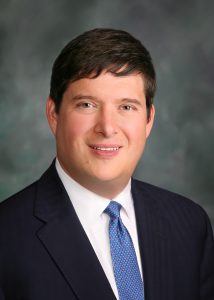
First of all, let’s address the myth that people 65 and over are unlikely to use digital technology in their daily lives. In fact, according to a 2017 Pew study of technology adoption among older adults, four in ten people over 65 years old own smart phones, more than double from just four years earlier. And while smart phones are now being widely used to help older adults communicate with family, friends, and colleagues, experts foresee a future where smart technology—specifically, mobile medical apps—will be widely used to improve and even save lives. But in order for this technology to reach the hands of patients and medical professionals, the Centers for Medicare & Medicaid Services (CMS) must change or broaden existing reimbursement policies.
Increasingly the Food and Drug Administration (FDA) is clearing mobile medical apps that may only be prescribed by a clinician that stand on their own or as an adjunctive treatment for specific illnesses or injuries, but Medicare has not identified a way to pay for them. For example, the FDA recently permitted marketing of the first mobile medical application to help increase the amount of time a patient participates in an outpatient treatment program for individuals with opioid use disorder. Many of the mobile medical applications that have been cleared by the FDA are coupled with another device for which Medicare has already established coverage, coding, and payment policies—such as glucose testing systems for people with diabetes. The FDA classifies some mobile medical applications as Class II. Medicare pays for many other Class II medical devices as durable medical equipment (like a power wheel chair or continuous glucose meter), under a specialized payment system, or as part of the clinician’s associated service .
It is great news that the FDA is clearing these medical mobile apps that treat a range of illnesses and injuries, but because Medicare does not have a way to pay for them, they remain out of reach for many people. Broadening Medicare’s emphasis on new technology to include coverage, coding, and payment for mobile medical applications that have been cleared by the FDA should be a priority for the agency. Until CMS can establish a permanent pathway for Medicare coverage of mobile medical apps, it should use its Innovation Center and other programs to promote them, make mobile medical apps more accessible to people with Medicare, and ultimately deliver better health outcomes for patients. CMS and the Administration should also call on Congress to legislate the authority for CMS to cover FDA-cleared mobile medical apps used to diagnose or treat illnesses or injuries under the Medicare program.
Older adults have shown that they are willing to innovate by integrating digital technology into their daily lives. It is now up to Congress and CMS to meet and match their enthusiasm and allow access to digital tools designed to improve health and longevity.
Jim Scott serves as the chair of the Alliance for Aging Research’s Board of Directors. He is also the president and CEO at Applied Policy in Washington, D.C.






